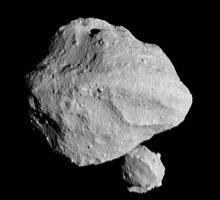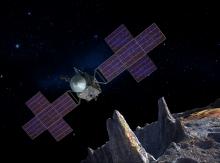Listen to today's episode of StarDate on the web the same day it airs in high-quality streaming audio without any extra ads or announcements. Choose a $8 one-month pass, or listen every day for a year for just $30.
You are here
Moon and Mars
Three billion years ago, a giant space rock rammed into Mars with a “splat.” It plunged into a shallow ocean. That gouged a 75-mile-wide crater. It also created a tsunami that raced hundreds of miles in every direction, leaving an imprint on the coastline.
That’s the conclusion of a new study of a region known as Arabia Terra, a smooth plain in the northern hemisphere. It’s one of several studies in recent months that reinforce the idea that Mars was once much warmer and wetter than it is today.
One of the studies found there was intense runoff from rains all across the planet for its first billion and a half years. After that, the planet cooled enough for the water to freeze. Yet there were warmer periods as recently as a billion years ago. Each of those periods lasted millions of years, and produced more big runoff events across the whole planet. That produced periods where life could have existed on the Martian surface.
Scientists have a tough time explaining why Mars was so warm and wet — especially early on. The young Sun was much cooler than it is today, so there was less energy to warm Mars and the other planets. So the Red Planet’s history is keeping scientists a little befuddled.
And Mars is slowly climbing into view in the early morning. It’s quite low in the east as twilight begins to paint the sky, and looks like a moderately bright orange star. It’ll be easier to pick out tomorrow because it’ll stand just below the crescent Moon.






